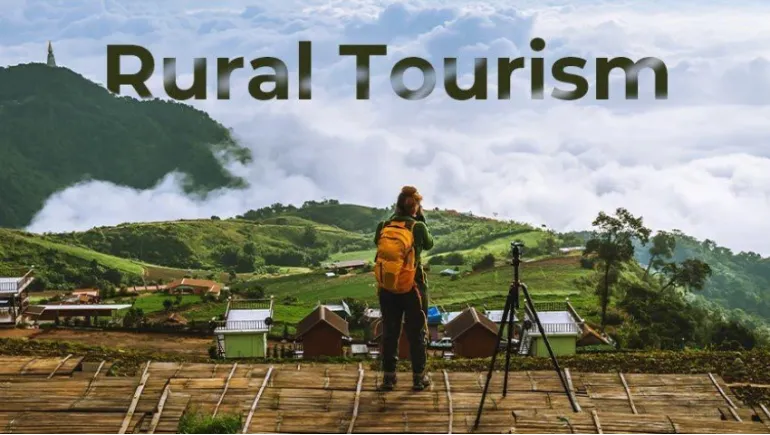
Traveling to rural areas can be an exciting and rewarding experience, offering breathtaking landscapes, unique cultural experiences, and a break from the hustle of city life. However, it also comes with its own set of challenges—especially when it comes to technology. In many rural regions, internet connectivity is limited, and mobile networks may not be reliable. That's why having the right tech guides for rural travel is crucial for ensuring a safe, efficient, and enjoyable journey.
In this blog post, we'll explore the best travel tech tools, offline solutions, and communication strategies that every traveler should know before heading into the countryside. Whether you're planning a hiking trip, a road trip through remote villages, or a photography expedition, these tech guides will help you stay connected and prepared.
Rural travel often means venturing into areas where access to modern infrastructure is limited. Unlike urban settings, where Wi-Fi and 4G/5G coverage are usually available, rural regions may have spotty or no internet at all. This can make navigation, communication, and even basic tasks like checking the weather or finding local services more challenging.
That's where tech guides for rural travel come in. These resources provide practical advice on using digital tools, managing offline content, and staying in touch without relying on a stable internet connection. By preparing ahead of time, you can avoid common pitfalls and make your rural adventure more seamless.
When traveling to rural areas, it's important to carry the right technology to ensure you can navigate, communicate, and document your journey effectively. Here are some of the most useful travel tech tools:
One of the biggest challenges of rural travel is getting lost. To avoid this, use offline map applications that allow you to download maps for specific regions. Some of the best options include:
These apps are especially useful if you're traveling by car, hiking, or biking in remote locations.
While smartphones can work as GPS devices, they may not always have the battery life or signal strength needed for long trips. Consider carrying a dedicated GPS device such as a Garmin or Magellan unit. These devices are designed for outdoor use and offer more accurate navigation in areas with weak cellular signals.
Battery life is a big concern when traveling in areas without access to electricity. A portable power bank or solar charger can keep your phone, GPS, and other devices charged throughout your trip. Look for high-capacity models that can charge your devices multiple times.
For truly remote areas where even mobile networks are unreliable, satellite communication devices like the Garmin inReach or Spot Gen3 can be a lifesaver. These devices allow you to send and receive messages, track your location, and even trigger emergency alerts, even when there's no cell service.
Staying connected is one of the main concerns when traveling to rural areas. While you might not have a stable internet connection, there are still ways to keep in touch with family, friends, or emergency services.
Some mobile carriers offer specialized data plans for rural travelers. Before your trip, check with your provider about roaming packages, data bundles, or international roaming options that could help you stay connected. Alternatively, consider purchasing a local SIM card with better coverage in the region you're visiting.
Even if you don't have a strong data connection, SMS and voice calls often work in areas with minimal network coverage. Make sure your phone is set up for emergency SMS and voice-only mode so you can communicate even when data is unavailable.
If you need to send messages without internet, consider using offline messaging apps like Signal or WhatsApp with Wi-Fi only mode enabled. These apps can store messages locally and sync once you regain internet access.
Another important aspect of tech guides for rural travel is digital documentation and safety. Making sure you have backups of your important documents and knowing how to stay safe in remote areas can make a big difference.
Before leaving, scan and save copies of your passport, ID, insurance, and travel itinerary in the cloud or on your phone. This ensures that you have access to critical information even if you lose your physical documents.
Create a list of emergency contacts, including local authorities, embassies, and your travel companions. Store this list in your phone and print a copy to carry with you.
If you're planning to capture photos or videos of your rural adventure, make sure your camera or drone has enough storage and battery life. Consider using cloud backup services like Google Photos or iCloud to automatically back up your media once you get a signal.
To make the most of your tech guides for rural travel, follow these best practices:
Traveling to rural areas can be an incredible experience, but it requires careful planning, especially when it comes to technology. With the right tech guides for rural travel, you can navigate, communicate, and document your journey with confidence, even in the most remote locations.
Whether you're hiking through untouched forests, exploring ancient ruins, or simply enjoying the peace of the countryside, being prepared with the right tools and strategies will make your trip safer and more enjoyable. So, pack your gear, download those maps, and get ready for an unforgettable adventure.












Comments
There are no comments for this Article.